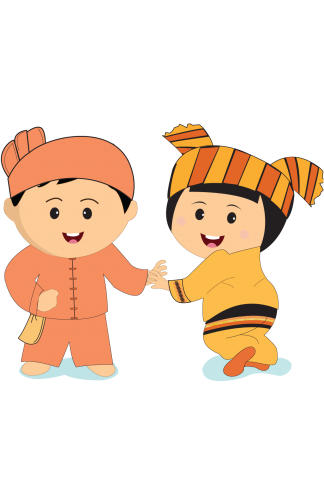Vertical Tabs

Shan State

Shan State is a state of Myanmar. Shan State borders China to the north, Laos to the east, and Thailand to the south, and five administrative divisions of Burma in the west. Largest of the 14 administrative divisions by land area, Shan State covers 155,800 km², almost a quarter of the total area of Burma. The state gets its name from the Shan people, one of several ethnic groups that inhabit the area. Shan State is largely rural, with only three cities of significant size: Lashio, Kengtung, and the capital, Taunggyi. Taungyyi is 150.7 km north east of the nation's capital Naypyitaw.
Most of the Shan State is a hilly plateau, the Shan Plateau, which together with the higher mountains in the north and south forms the Shan Hills system. The gorge of the Thanlwin (Salween/Namhkong) River cuts across the state. The famous Inle Lake where the leg-rowing Intha people live in floating villages, in the great Nyaung Shwe 'plain', is the second largest natural expanse of water in Burma, shallow but 14 miles (23 km) long and 7 miles (11 km) wide. Pindaya Caves near Aungban are vast limestone caves which contain 6226 Buddha images.The people of Shan State can be divided into nine primary ethnic groups: the Shan, Pa-O, Intha, Lahu, Lisu, Taungyo, Danu, Ta'ang, Ahka and Jinghpaw (Kachin).
The valleys and tableland are inhabited by the Shans, who in language and customs resemble the Thais, Dai, and the Lao. They are largely Buddhists and are mainly engaged in agriculture. Among the Shans live the Bamar, Han-Chinese, and Karens. The hills are inhabited by various peoples, notably the Wa, who are numerous in the north and along the Chinese border. The Ta'ang People are numerous in the Northern Shan State, in Namkham, Muse, Namhpaka, Kutkai, and Lashio Townships along the Burma-China Border and also in the middle of Shan State, in Namhsam, Kyaukme and Thibaw Townships. The population of the Ta'ang people is over 100,000. Some of the Ta'ang people in Kalaw and Aungban in the Southern Shan State. The Lisu people are numerous in Mongmit, Hsipaw, Kyaukme, Namhsam, Namhpaka, Kutkai, Namtu, Lashio, Hopang, Tangyan, and Kokang of northern Shan State
Silver, lead, and zinc are mined, notably at the Bawdwin mine, and there are smelters at Namtu. Rubies are extracted in large quantity in Mong Hsu Township in late 1990s and early 2000s. Teak is cut, and rice and other crops are grown. Shan State is famous for its garden produce of all sorts of fresh fruit and vegetables thanks to its temperate but sunny climate. Itinerant markets that travel from place to place, setting up on every fifth day in each small town or village, are typical, although large towns have permanent markets. It is especially a problem in Shan State where vast areas are beyond government control. According to official statistics, only about 8% of primary school students in Shan State reach high school.
See how the Mary K. Yap Foundation is supporting programs like the "Myanmar Orphans" Project ....Learn more >
Copyright © 2014 - 2025 Mary K. Yap Foundation Inc. All rights reserved.
Designed by WTCMM
Languages
- English

- myanmar


